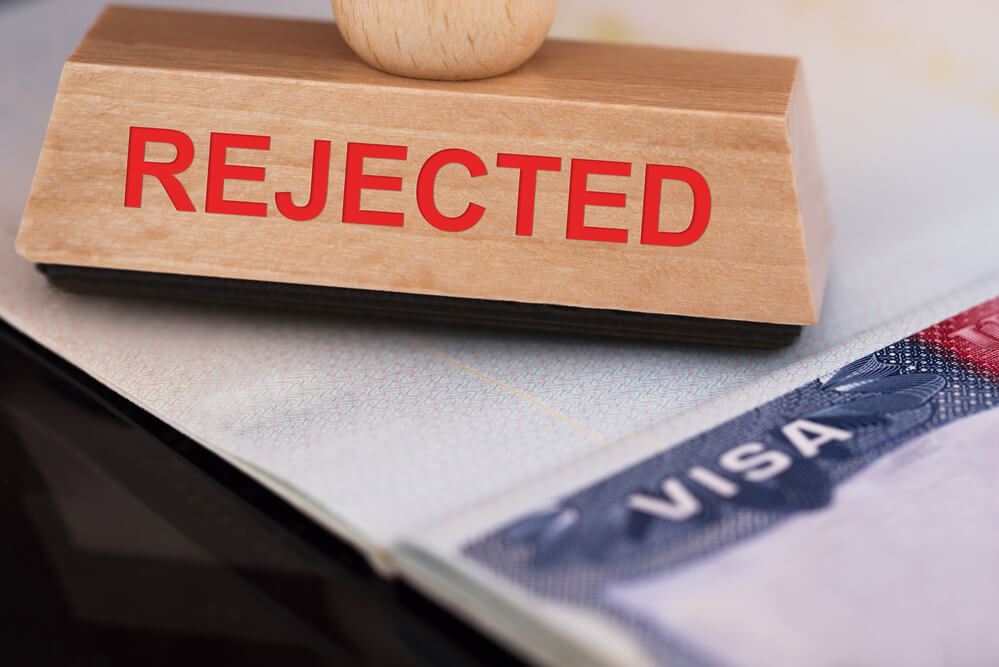Immigration Denied Levels During Trump's Presidency Increased Significantly
New data from US Citizenship and Immigration Services (USCIS) shows that the number of denied immigration applications has been on the rise during Donald Trump's presidency. Denial rates for everything from travel and work permits to foreign worker petitions have risen in every quarter but one since Trump took office.

Фото: Depositphotos
Overall, USCIS' denial rate was 2019% higher in the first quarter of FY 80 than in the first quarter of FY 2017, the last full quarter under the Obama administration (October to December 2016). The denial rate increased from 7,4% in the first quarter of fiscal 2017 to 13,2% in the first quarter of fiscal 2019, the website said. Kato Institute.
Failure rates in the first quarter of 2019 of the year were the highest in the period from 2013 to 2019 fiscal years when USCIS publishes the statistics of failures. In the first quarter of the 2019 fiscal year, more than 72 000 failures were recorded. These data exclude applications for citizenship and include all other applications sent by USCIS, except for DACA (program to protect illegal immigrants brought to the US by children) and TPS (temporary protected status for immigrants from countries in distress due to war or natural disaster). Published data do not include applications for US visas that are filed with the US State Department, although the level of refusals has also increased.
The graph below shows the trend for refusals of asylum claims in the United States for the period from 2016 to 2019 fiscal years. This data does not include applications that were made by people caught in illegal border crossing, as applications submitted in this way undergo a different procedure. The data show that from the first quarter of the 2017 of the fiscal year to the first quarter of the 2019 of the fiscal year, the level of refusals for asylum applications increased from 0,8% to 5,1%, that is, increased by 515%.
The graph below shows the quarterly denial rate for T visa applications from fiscal years 2016 to 2019. These visas provide legal status in the United States to victims of human trafficking. From the first quarter of FY 2017 to the first quarter of FY 2019, the denial rate for T visa applications increased from 11,3% to 43,3%—an increase of 284%.
The following graph shows the trend of denials of adjustment of status and green cards through kinship. The failure rate increased from 11,2% in the first quarter of fiscal 2017 to 14,6% in the first quarter of fiscal 2019—a 30% increase. However, this trend began before fiscal year 2017. The denial rate in this category increased by 2019% in the first quarter of FY 2016 compared to the first quarter of FY 60.
Below is quarterly data on the US Employment Authorization Document (EAD) denial rate from FY 2016 to FY 2019. Some immigrants whose status does not automatically qualify them to work in the United States may apply for an EAD. This includes asylum seekers or spouses of H-1B visa holders who have applied for green cards. The EAD denial rate increased from 4,7% in the first quarter of FY 2017 to 10,5% in the first quarter of FY 2019—a 123% increase.
The following graph shows the denial trend for U.S. nonimmigrant work visa applications (Forms I-129). These are applications that employers submit on behalf of foreign guest workers to obtain U.S. work visas (H-1B and H-2A). The denial rate in this category increased from 17,6% in the first quarter of fiscal 2017 to 28% in the first quarter of fiscal 2019—a 59% increase.
The denial rate for parole petitions from fiscal years 2016 to 2019 is shown below. Parole provides immigrants with pre-authorization to leave and enter the United States without any consequences. Green card applicants often use parole to travel abroad while their green card application is pending. The denial rate in this category increased from 8,4% in the first quarter of FY 2017 to 14,7% in the first quarter of FY 2019—a 75% increase.
Additionally, USCIS received fewer applications during Trump's presidency. Total applications—again excluding citizenship petitions, DACA and TPS—declined from 1,7 million in the first quarter of FY 2017 to 1,3 million in the first quarter of FY 2019. The higher denials are due to various immigration changes introduced by the Trump administration.
USCIS has also made many immigration forms longer and more complex, doubling or tripling their length and expanding the list of required information. In addition, the government changed asylum standards, making it easier for judges to refuse such applications.
Read also on ForumDaily:
How to track the delivery of your green card and other immigration documents
How long do I need to wait for the green card for family reunification: data for May
What vaccinations does the US Citizenship and Immigration Service require?
How do immigrants protect themselves in case of domestic violence
Subscribe to ForumDaily on Google NewsDo you want more important and interesting news about life in the USA and immigration to America? — support us donate! Also subscribe to our page Facebook. Select the “Priority in display” option and read us first. Also, don't forget to subscribe to our РєР ° РЅР ° Р »РІ Telegram and Instagram- there is a lot of interesting things there. And join thousands of readers ForumDaily New York — there you will find a lot of interesting and positive information about life in the metropolis.











